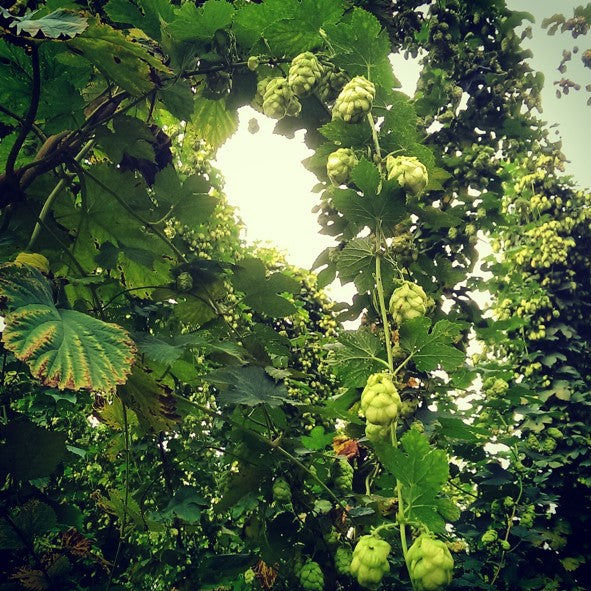
Focus on Hops
Posted by Tracey Baty on
History:
Today, the words beer and ale mean much the same, but the word ‘ale’ was originally reserved for brews produced from malt without hops. This was the original drink of the Anglo-Saxons and English, whereas ‘beer’, a brew using hops, probably originated in Germany.
The cultivation of hops was probably introduced from Europe to Kent at the end of the 15th century. Our national drink until then had been ale, unhopped and sometimes flavoured with herbs such as wormwood. In those early days, the sole reason for using hops was to preserve the beer in good condition: the bittering effect was reluctantly accepted!
The Plant:
One of the most essential ingredients in the beer we produce and drink on a daily basis is the hop, or, to give it its Latin name, Humulus Lupulus (the wolf of the woods).
Hops are a family of tall climbing perennial plants which are dioecious (the male and female plants are separate) and can live for between 10 to 20 years with root systems of up to 3.75 metres.
The female hop plant produces hop cones which consist of layers of soft petals amongst which lupulin glands develop (these look like large yellow pollen grains).
These lupulin glands contain oil resins which give bitterness, flavour and aroma to beer, as well as supplying preservative properties to help maintain the shelf life of the beer and prevent bacteria.
Planting & Harvest:
Hops grow back from their rootstock every year, so once planted can be left in the field for the next 10+ years. They start to produce new growth in the spring and the tendrils are trained up ‘strings’ which are held up by a framework of poles and struts to support the plants as they grow.
In July they begin to reach their maximum height and this is when the hop cones/flowers start to develop. This is triggered by the shortening of the daylight hours from mid June onwards. The hop cones continue developing throughout August and reach maturity in early September.
In September the hops are then cut and sent through the hop picking machine, where the hop cones are separated from the bine and the leaf.
The hop cones are then dried - this is the most important aspect of the harvest. They have a moisture level of about 80% when first harvested, which is then taken down to around 10% using kilns and dryers. The specific name for a place to dry hops is an ‘oast house’.
Once dried, the hops can then be baled and vacuum packed which allows them to be stored in a cold store for up to two years. This is how we then buy them to use during production.
Wold Top founders and directors Tom and Gill Mellor studied at, and met at, Wye College in Kent which, until 2007 housed the British Hop development programme. Spending his formative years surrounded by hop farms, oast houses and locally brewed Kentish beer gave Tom his inspiration for founding Wold Top in 2003!
